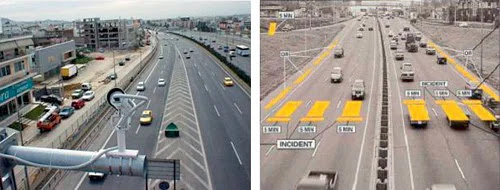Over the past few years, deep learning has had a significant impact on a wide range of technological fields. The ability of computers to comprehend images and movies on their own, or "computer vision," is one of the hottest themes resonating throughout this business. Computer vision is required for the operation of facial recognition, self-driving automobiles, and biometrics. Image processing is the cornerstone of computer vision.
What Is an Image?
Before we jump into image processing, we need to first understand what exactly constitutes an image. An image is represented by its dimensions (height and width) based on the number of pixels. For example, if the dimensions of an image are 500 x 400 (width x height), the total number of pixels in the image is 200000.
This pixel is a point on the image that takes on a specific shade, opacity or color. It is usually represented in one of the following:
Grayscale - A pixel is an integer with a value between 0 to 255 (0 is completely black and 255 is completely white).
RGB - A pixel is made up of 3 integers between 0 to 255 (the integers represent the intensity of red, green, and blue).
RGBA - It is an extension of RGB with an added alpha field, which represents the opacity of the image.
Image processing requires fixed sequences of operations that are performed at each pixel of an image. The image processor performs the first sequence of operations on the image, pixel by pixel. Once this is fully done, it will begin to perform the second operation, and so on. The output value of these operations can be computed at any pixel of the image.
What Is Image Processing?
The process of converting an image into a digital format and carrying out specific procedures to extract some usable information from it is known as image processing. When implementing specific specified signal processing techniques, the image processing system typically interprets all images as 2D signals.
There are five main types of image processing:
- Visualization - Find objects that are not visible in the image
- Recognition - Distinguish or detect objects in the image
- Sharpening and restoration - Create an enhanced image from the original image
- Pattern recognition - Measure the various patterns around the objects in the image
- Retrieval - Browse and search images from a large database of digital images that are similar to the original image
Fundamental Image Processing Steps
Image Acquisition
Image acquisition is the first step in image processing. This step is also known as preprocessing in image processing. It involves retrieving the image from a source, usually a hardware-based source.
Image Enhancement
Image enhancement is the process of bringing out and highlighting certain features of interest in an image that has been obscured. This can involve changing the brightness, contrast, etc.
Image Restoration
Image restoration is the process of improving the appearance of an image. However, unlike image enhancement, image restoration is done using certain mathematical or probabilistic models.
Color Image Processing
Color image processing includes a number of color modeling techniques in a digital domain. This step has gained prominence due to the significant use of digital images over the internet.
Wavelets and Multiresolution Processing
Wavelets are used to represent images in various degrees of resolution. The images are subdivided into wavelets or smaller regions for data compression and for pyramidal representation.
Compression
Compression is a process used to reduce the storage required to save an image or the bandwidth required to transmit it. This is done particularly when the image is for use on the Internet.
Morphological Processing
Morphological processing is a set of processing operations for morphing images based on their shapes.
Segmentation
Segmentation is one of the most difficult steps of image processing. It involves partitioning an image into its constituent parts or objects.
Representation and Description
After an image is segmented into regions in the segmentation process, each region is represented and described in a form suitable for further computer processing. Representation deals with the image’s characteristics and regional properties. Description deals with extracting quantitative information that helps differentiate one class of objects from the other.
Recognition
Recognition assigns a label to an object based on its description.
Applications of Image Processing
Medical Image Retrieval
Image processing has been extensively used in medical research and has enabled more efficient and accurate treatment plans. For example, it can be used for the early detection of breast cancer using a sophisticated nodule detection algorithm in breast scans. Since medical usage calls for highly trained image processors, these applications require significant implementation and evaluation before they can be accepted for use.
Traffic Sensing Technologies
In the case of traffic sensors, we use a video image processing system or VIPS. This consists of a) an image capturing system b) a telecommunication system and c) an image processing system. When capturing video, a VIPS has several detection zones which output an “on” signal whenever a vehicle enters the zone, and then output an “off” signal whenever the vehicle exits the detection zone. These detection zones can be set up for multiple lanes and can be used to sense the traffic in a particular station.
Image Reconstruction
Face Detection
Benefits of Image Processing
- The digital image can be made available in any desired format (improved image, X-Ray, photo negative, etc)
- It helps to improve images for human interpretation
- Information can be processed and extracted from images for machine interpretation
- The pixels in the image can be manipulated to any desired density and contrast
- Images can be stored and retrieved easily
- It allows for easy electronic transmission of images to third-party providers








%20for%20Hacking%20in.jpg)

